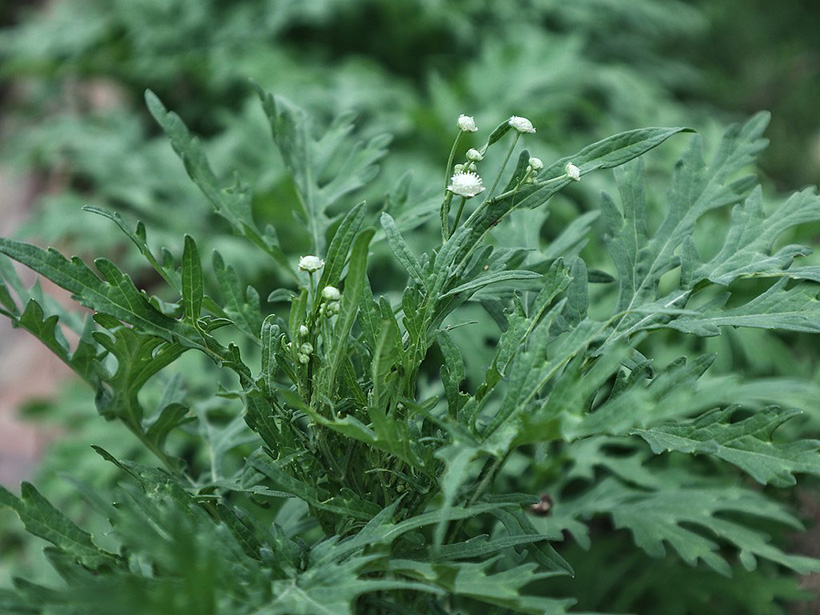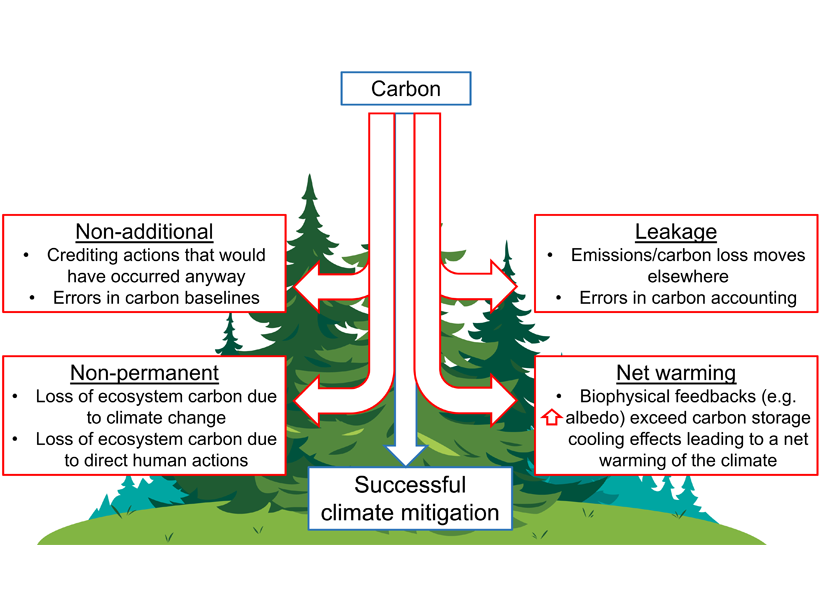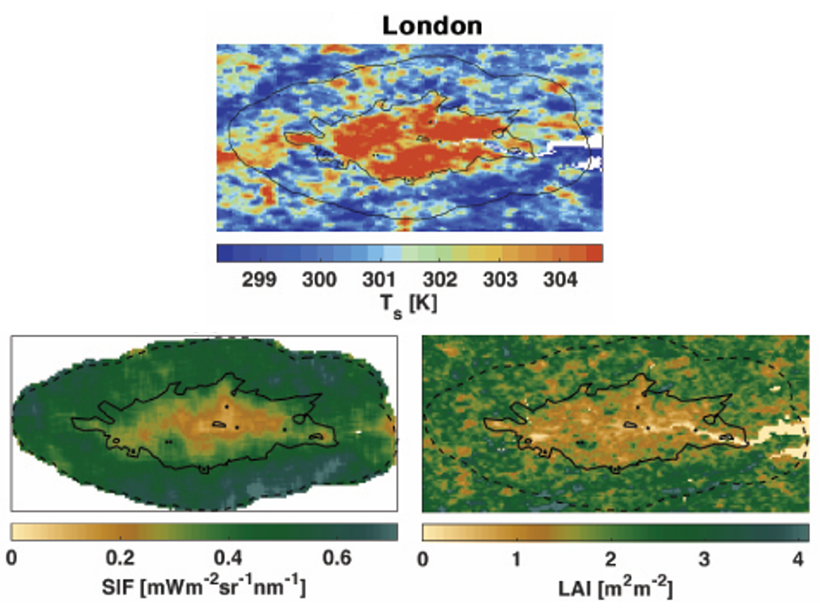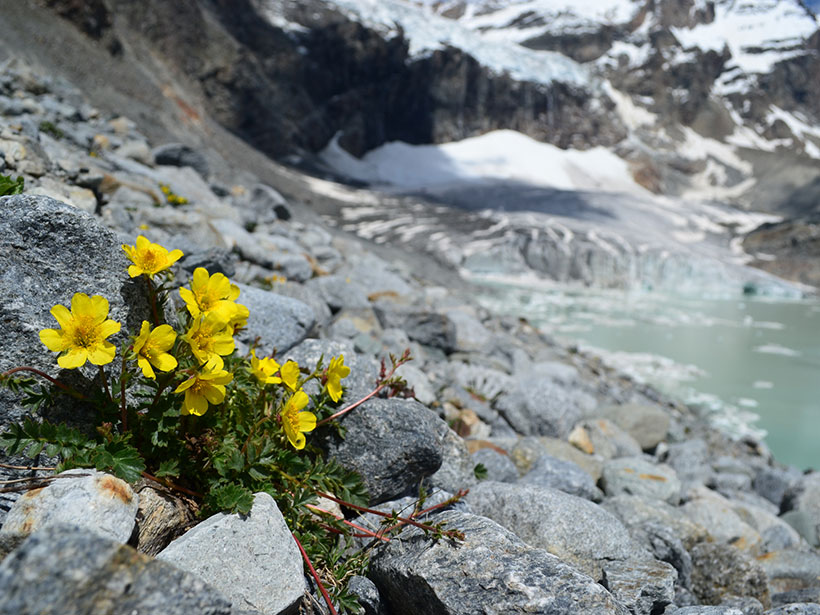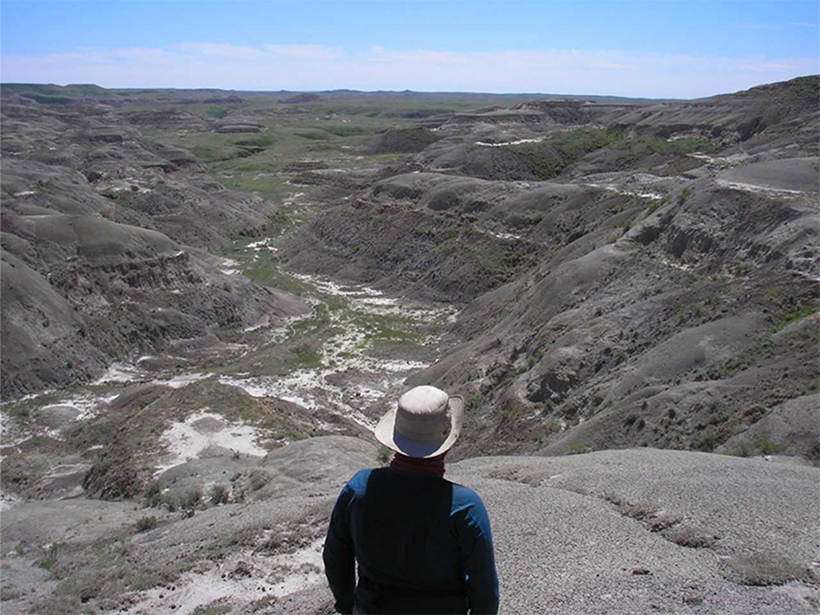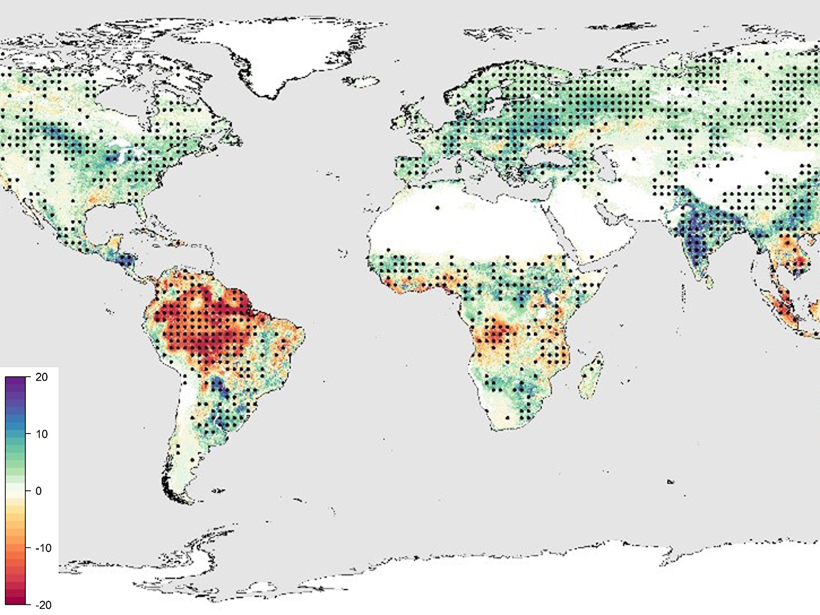Shrubs and trees across the United States routinely sip water stored in bedrock, a discovery that has implications for the terrestrial water cycle.
plants
Famine Weed Becomes More Toxic, Invasive in Carbon-Rich Atmosphere
A noxious weed’s success in Australia could indicate that some plants are benefitting from our carbon-rich atmosphere, becoming more invasive, competitive, and toxic.
Permanence of Nature-Based Climate Solutions at Risk
Conserving native ecosystems helps sequester carbon and mitigate climate change, but new statistical modeling questions the permanence of California’s carbon-rich forests with climate change.
A Well-Balanced Ecosystem Uses Water Most Efficiently
Excess of a single nutrient, such as nitrogen, may boost plant productivity, but the imbalance leads to less efficient water use as plants scramble for the nutrients they lack.
Urban Vegetation Key Regulator for Heat Island Intensity
Satellite data reveals that urban vegetation, especially urban forests, is the most important factor regulating Urban Heat Island intensity.
Global Warming Could Rob Liquors of Their Flavor
A new study examines the impact of glacial extinction on biodiversity in alpine regions.
Terrestrial Plants Flourished After the Cretaceous–Paleogene Extinction
Compounds in ancient plant leaves tell the story of how an extinction event shaped our planet’s ecosystems.
Water Stress Controls the Capacity of the Terrestrial Carbon Sink
Despite increased photosynthetic activity at northern latitudes in recent decades, plant productivity in tropical zones suffers because of water limitations.
¿Cómo Afecta el Reverdecimiento del Ártico al Agua Subterránea?
Nuevas investigaciones examinan cómo los cambios en la ecología de la superficie influyen en la hidrología subterránea en el Ártico.
Drones Help Bridge the Gaps in Assessing Global Change
New instruments in the research tool kit bolster scientific understanding of the ecology of a greening Arctic.


